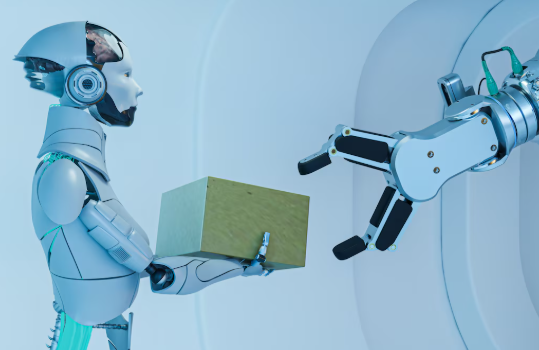STL Digital is driving engineering transformation by blending advanced methodologies with business-focused innovation. As the software landscape evolves rapidly, organizations are under constant pressure to deliver faster—without compromising on security. DevSecOps—the integration of Agile, DevOps, and security—offers a practical framework to speed up product delivery while ensuring strong enterprise safeguards. In this guide, we share a step-by-step playbook designed for engineering leaders, platform teams, and security professionals leading this critical transformation.
1. The Case for Engineering Change
Modern software demands agility, resilience, and embedded controls. Firms that cling to siloed development, delayed security reviews, or monolithic releases—risk falling behind.
- Engineering velocity: Agile and DevOps principles help shorten feedback loops, enabling sprints, continuous delivery, and rapid experimentation.
- Security posture: Traditional app security testing—left to late-stage—introduces blind spots, slowdowns, and risk.
- Organizational alignment: Security needs visibility and involvement early on, not as an afterthought.
A 2020 McKinsey analysis highlights how DevSecOps can replace quarterly releases with weekly or daily cycles while slashing vulnerability response times from months to hours and significantly reducing defects and costs.
2. Core Principles of Agile DevSecOps
• Shift security left
Security is integrated into every Agile backlog and sprint. Threat modelling, automated tests, and design reviews happen alongside product features—empowering engineers to own DevOps security outcomes.
• Build cross-functional teams
Compose squads that include developers, QA, platform engineers, and security experts. As McKinsey puts it: embed SREs and security within teams to blur boundaries between development and infrastructure.
• Automate everything
CI/CD pipelines should run static (SAST), dynamic (DAST), and composition scans on each commit.
• Embrace immutable infrastructure
Treat production environments as disposable. Deploy through infrastructure-as-code (IaC), containers, and automated provisioning. Manual changes are banned; everything goes through controlled pipelines. This promotes consistency, auditability, and resilience.
• Promote developer empowerment
Embed automated security tools directly into IDEs and pipelines. Offer spend-and-scale guardrails, not command-and-control. Encourage engagement via DevOps services akin to internal platforms, reducing friction and enabling fast feedback loops.
4. Learning from Real-World Examples
ABN AMRO’s hybrid-cloud DevSecOps
McKinsey details how ABN AMRO combined agile with hybrid Cloud and DevSecOps from 2018 onward—modularizing apps, automating logistics, securing infrastructure, and coaching teams. This delivered faster innovation, efficiency boosts, and stronger product engineering discipline.
Global SRE-led models
Leading firms use SRE squads embedded in product teams, enabling platform-driven DevSecOps and shared ownership of uptime, security, and delivery pipelines—clearly outlined in McKinsey’s playbook.
5. Overcoming Common Challenges
| Challenge | Solution |
| Cultural friction (“not our job”) | Establish shared OKRs across development, security, SRE, and compliance; host blameless retrospectives. |
| Tool complexity | Define a standardized developer platform; integrate tools that align with IDEs and pipelines. |
| Skills shortage | Launch security training, bootcamps, certifications, and mentorship; elevate security champions. |
| Legacy systems | Migrate incrementally—start with modular services and greenfield pipelines, and retrofit existing apps. |
| Measuring security effectiveness | Track scanning coverage, MTTR, open vulnerability lifespan, and mean time between incidents (MTBI). |
6. The Benefits: Why It Matters
- Accelerated delivery: Enterprises can shift from quarterly to daily deployments.
- Improved quality: Automated checks catch defects earlier—reducing rework and post-launch patches.
- Cost reduction: Early fixes avoid expensive late-stage remediation and crisis management.
- Stronger compliance: Built-in audit trails enhance governance, reporting, and regulatory alignment.
- Team autonomy: Developers thrive in empowered environments that reduce handovers and dependencies.
A McKinsey study on digital delivery excellence showed that high-maturity teams deliver faster, with higher quality and productivity gains. Additionally, modular product-and-platform models accelerate time-to-market, cut defects by 50–70%, and boost operating margins.
7. Role of STL Digital
STL Digital brings end-to-end expertise in implementing Agile, product engineering, and security-driven practices. Their consulting teams help:
- Re-architect pipelines along microservices and security patterns
- Build internal devops services platforms with embedded security guardrails
- Provide training and mentorship to create security-aware developer cultures
- Monitor KPIs (deploy frequency, MTTR, vulnerability fix-time) and iterate improvements
8. Key Takeaways & Action Plan
Effective DevSecOps transformation doesn’t begin with an enterprise-wide overhaul—it starts with a single, well-chosen product squad. Identify a team that’s agile-ready and willing to experiment. Let them prototype secure CI/CD pipelines, integrate testing and scanning tools, and iterate on security practices. This allows you to learn what works in your specific context without overwhelming the organization. With each sprint, collect feedback, improve processes, and document results. Once success is visible—through faster deployments or reduced vulnerabilities—scale the model across other teams. Small, validated wins drive momentum and make change sustainable.
Automate Continually
Security, testing, and compliance must evolve from isolated checkpoints to continuous, automated workflows. Build pipelines that automatically run unit tests, integration checks, vulnerability scans, and policy validations with every code commit. Automation accelerates feedback loops, reduces manual errors, and ensures consistent application of best practices. It also reduces the burden on developers, allowing them to focus on building rather than chasing approvals. Make automation a non-negotiable foundation for every product team.
Enable Teams
Equip squads with the right tools and support. Self-service platforms should allow teams to spin up environments, access pre-approved libraries, and integrate testing tools without waiting on central teams. At the same time, embed security champions—developers trained in security best practices—within squads. They serve as advocates and advisors, ensuring that secure coding and configuration habits are adopted naturally across development cycles.
Measure What Matters
Avoid vanity metrics like tool adoption rates or code commit counts. Focus on outcomes: deployment frequency, mean time to detect and remediate vulnerabilities, and the ratio of resolved to unresolved issues. These insights reflect real engineering and security performance.
Sustain Cultural Change
True DevSecOps requires leadership commitment. Promote visibility, celebrate secure delivery milestones, and continuously educate teams. Incentivize behavior aligned with both business outcomes and secure engineering practices to keep momentum alive.
In conclusion, driving engineering change through Agile DevSecOps is a journey, not a one-off initiative. By embedding devops security, leveraging standardized devops services, reinforcing enterprise security through automation, and elevating product engineering as both mindset and center of gravity, organizations can become resilient innovators. STL Digital stands ready to guide that transformation—with strategy, execution, and unwavering support at every step toward secure, scalable, and rapid software delivery.



